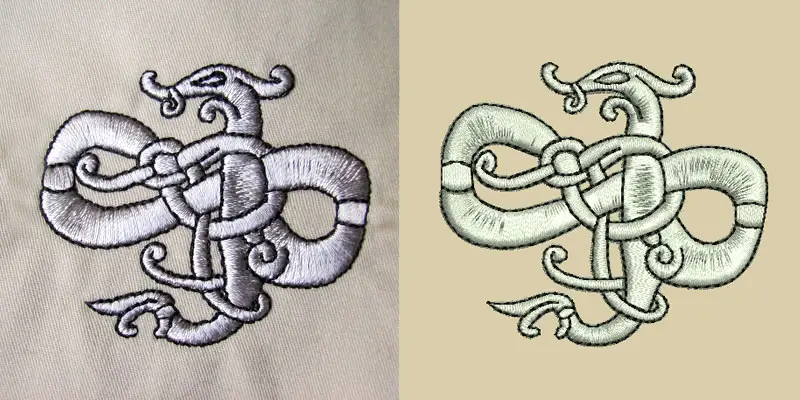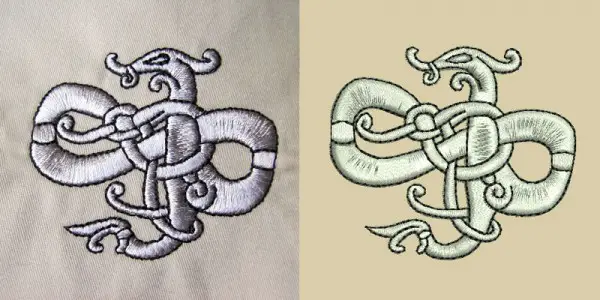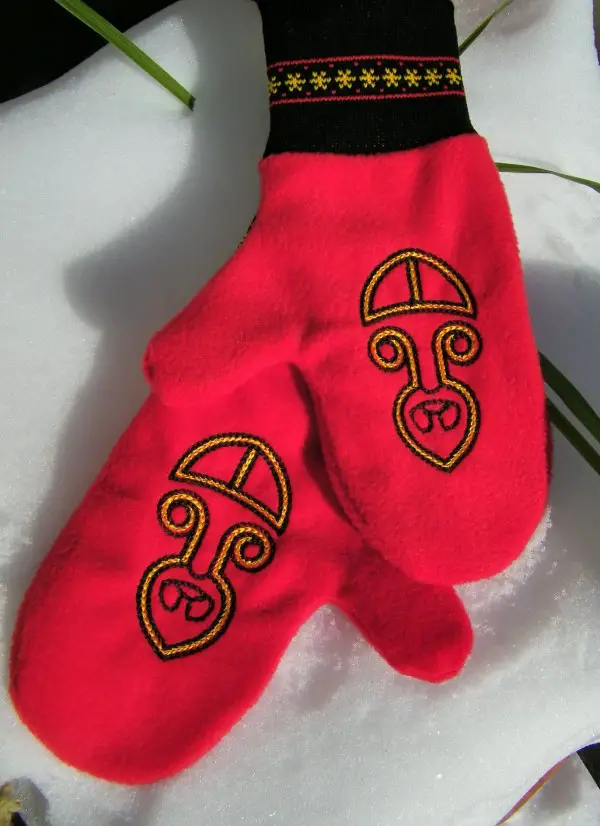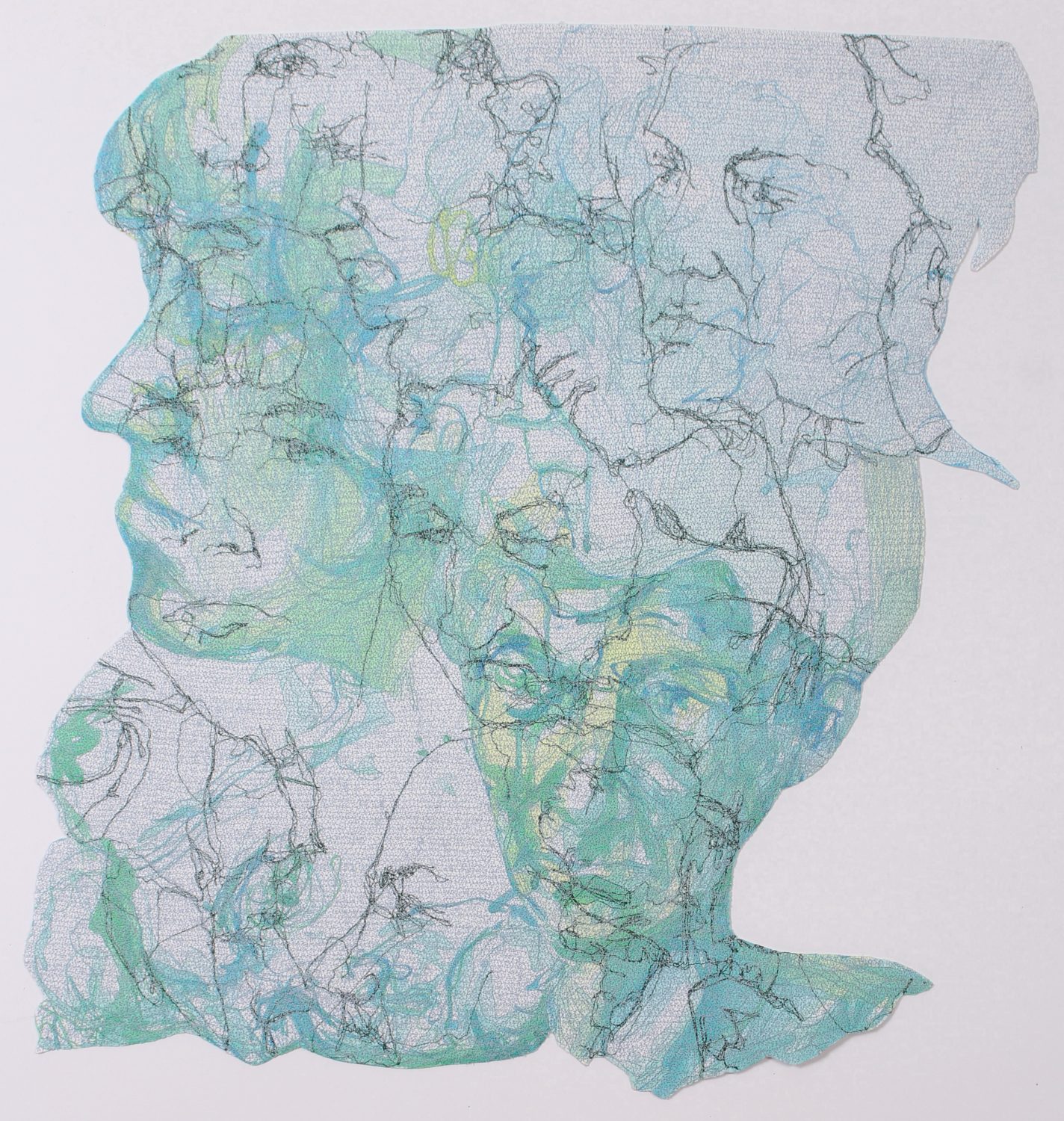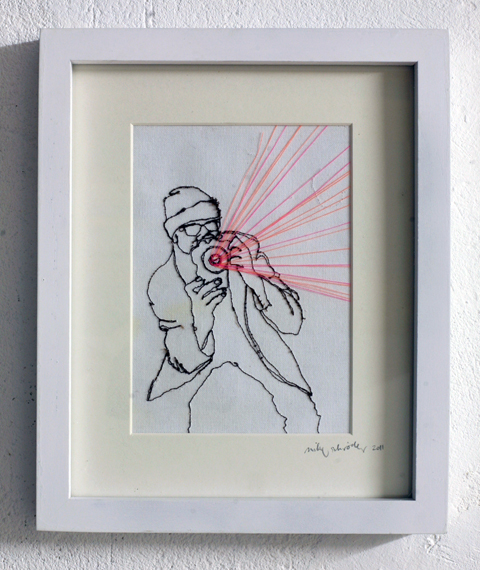Digitizers of any vintage have likely generated piles of useful elements and files with corresponding notebooks bristling with ideas to keep them punching into old age. With all these underutilized bits of digital stitchery and design concepts, a digitizer might just contemplate hawking stock embroidery designs to fellow machine embroidery enthusiasts. While it’s easy to jump on your favorite craft store site or throw a cart plugin on your blog, the world of stock design sales is fraught with pitfalls for the unwary digitizer. Assuming for the moment that you’re technically proficient enough that your designs run reliably as stock designs should, we’ll leave any specific technical considerations for future posts. For now, let’s focus on avoiding the three most common traps to which I’ve seen new stock sellers fall prey.
Copyright Infringement or Outright Theft
I repeat this to someone about once a week. If you sell, you can’t use someone else’s intellectual property. I’ve repeatedly watched designers and decorators lose the time and effort sunk into setting up their sites when they are caught infringing and shut down. You may stay small and never end up on the radar of rights-holders, but it’s a dangerous game to play. I love subversive stitching with parody and satire, but the infringing designs I usually see only infrequently engage in any such commentary. Despite all myths that say otherwise, there’s just no magic amount of alteration you can do to a logo that keeps you from infringing – if your design profits from or relies on the recognition that the original piece’s popularity created, you may be setting yourself up. With the attention of a deep-pocketed and litigious rights holder, you may just lose more than your designs. Don’t get me wrong, my data hoard contains my cosplay designs from fictional companies and characters. I’m no stranger to fan-art pieces, you just won’t find them on my stock sales site.
Using original or freely licensed art will allow you to avoid all the drama. Hence why I sketch even though I’m not the most proficient with a pencil; If you draw or design something yourself, all the rights are yours to enjoy. Luckily for those of you who don’t fancy themselves artists, there are also sources of art wherein either there is a free license for use to create commercial products (one of the many licensing options under Creative Commons, for instance) as well as art that has been around long enough to be in the public domain. There are several places that will allow you to search for such art by license specifically.
Many people think of this as a ‘artisan versus soulless corporation’ situation, but I’ve seen many trusting independent artists and designers fall victim to poaching from their portfolios and social sites. What’s more tragic is that independent artists are often thrilled to collaborate with digitizers and embroiderers; many times I’ve asked to work out rights on a piece of art to find the artist not only receptive, but excited to see their piece in stitches. Artists often become your best evangelists, sharing your efforts with their network of fans and friends. If you find something online that you simply must digitize for stock, find the artist and ask about collaboration; don’t just scrape their image and run with it. You’ll sleep better and you may make a new, artsy friend. Win-win!
Poor Example Images
Digitally generated quasi-3D previews are useful when you’re trying to get an interpretation of a corporate customer’s logo approved before stitching. Stock designs, however, should be complete, and approved to your own high standards. Showing stock designs in digital previews may send unfavorable messages about your work; seemingly that you don’t think your design worth investing the time, money, effort to stitch, or that the resulting embroidery doesn’t look as good as a digital preview. Neither of these messages is exactly a resounding recommendation.
Avoid this trap by taking always well-lit pictures of real stitched samples on reasonable materials. There are a plethora of tutorials about photographing products, even one from our friends at Urban Threads specifically about photographing embroidery. When nearly everyone carries a smartphone with a decently capable camera, there’s little reason why you can’t achieve an outcome that beats the digital preview. No matter the tools you use to take them, a combination of clean, clear and uniform overhead photos of actual stitch-outs as well as a couple of artistic angled shots will go a long way in building trust with your potential stitchy clients. I know it’s costly and you may fear the possible flaws in your sample, but if there are obvious flaws, the test stitch is your chance to fix them. Refinement makes all the difference with stock designs- it’s always worth your while to edit and stitch another sample. Not only will the product photo improve, but your customer will appreciate your smooth-running, worry-free designs even more than they love the clean look of your immaculately-crafted pics. With quality and ease of use comes loyalty and a credit that can’t be over-valued in a world where social proof is so important.
Selling Designs without Context
This is where stock design dabblers like myself fall far short of powerhouses like our aforementioned friends at Urban Threads. You can sell designs by simply creating a catalog and tagging your designs for search, but that’s not enough to get your designs shared. Creating additional content that features what your designs can do is a critical next step to making them stand out; you want to capture the customer’s imagination and there’s no better way than to show them what incredible creations they could be making if they just had your designs.
A page of categorized thumbnails just can’t achieve what images of real projects, blog posts featuring their uses, or full tutorials can when it comes to sparking your customer’s interest. Don’t make them rely on imagination; show them the creative benefits of your work. Though this does mean a further investment of time and effort, a great deal can be accomplished on the cheap. Many of my embroidery friends specifically use thrift-store upcycling projects to keep costs down while providing a real direct benefit to customers who are trying to rejuvenate their own off-the-rack finds. The time you spend on these creations will pay for itself, as not only does seeing the design in action help convince customers to buy, but search engines crawl that original content and give you that SEO juice that is hard to get in any other way.
I mean, have you seen the UT Look Book? I mean, really *seen* it?
If you take the time to teach your customers, your site can become more than their go-to design shop; it can become a reliable source of expertise they’ll regularly revisit for inspiration. Write that content, share those tutorials, take those pics, and get them posted. It’s worth the effort just for the exposure, but it also gives you first-hand experience of what it means to use your designs the way your customer will, an invaluable help in improving your process and making your product better.
Ultimately, authenticity is the common thread that ties together all of these tips. It’s there when you use your own creative work or honor and collaborate with artists to create something special. It’s there when you show your work in the thread, stitched on real fabric and garments. It’s there when you share your expertise and inspire your customers with projects that you’ve tested and explained.. Your customers will hear your authentic voice and they will respond. Not every one of your designs will change the face of embroidery, but you just may find that showing your true face will change how customers see and value your work.
–—
![]() Erich Campbell is an award-winning machine embroidery digitizer and designer and a decorated apparel industry expert, frequently contributing articles and interviews to embroidery industry magazines such as Stitches and Printwear as well as a host of blogs, social media groups, and other industry resources.
Erich Campbell is an award-winning machine embroidery digitizer and designer and a decorated apparel industry expert, frequently contributing articles and interviews to embroidery industry magazines such as Stitches and Printwear as well as a host of blogs, social media groups, and other industry resources.
Erich is an evangelist for the craft, a stitch-obsessed embroidery believer, and firmly holds to constant, lifelong learning and the free exchange of technique and experience through conversations with his fellow stitch-workers. A small collection of his original stock designs (that he hasn’t managed to make follow one of the above rules, sadly) can be found at The Only Stitch

